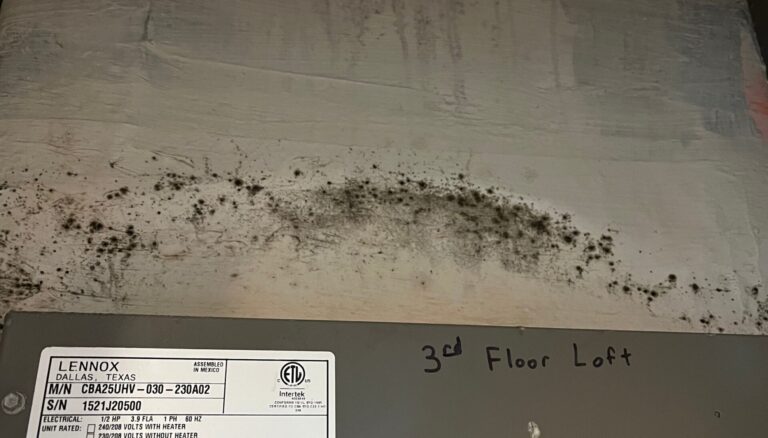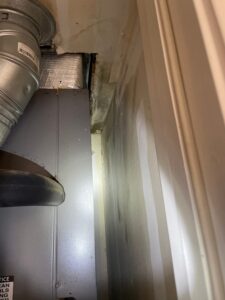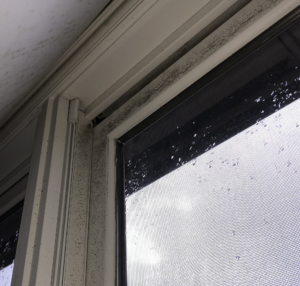Mold and Mildew: What’s the Difference?

In the battle for a clean and healthy home, two common foes often emerge: mold and mildew. While they may seem similar, understanding their differences is key to effective prevention and treatment. At HomePoint, we’re committed to helping you tackle both. Let’s explore what sets them apart and how our services can keep them at bay.
Defining Mold and Mildew
Mold:
Mold is a type of fungus that consists of small organisms found almost everywhere. It can be black, white, orange, green, or purple. In nature, molds play an essential role in breaking down dead leaves, plants, and trees. Molds thrive on moisture and reproduce by means of tiny, lightweight spores that travel through the air. In homes, they can grow on various surfaces like walls, floors, appliances, carpet, or furniture. They grow best in warm, damp, and humid conditions, and spread by making spores.
Mildew:
Mildew is a specific kind of mold, typically found on flat surfaces. It usually appears as a patch of gray or white fungus lying on the surface of a moist area. Mildew is commonly found on damp cloth, leather, paper, ceilings, bathroom walls, and floors, and grows in a flat pattern, and can appear powdery or fluffy. It’s a common problem in humid climates and can be found both indoors and outdoors.
Mold and Mildew: What's the Difference?
Appearance:
- Mold: It’s usually fuzzy or slimy in texture and appears in irregular shapes. Mold comes in various colors like green, black, red, or purple.
- Mildew: Typically looks powdery or fluffy and is usually white, gray, or yellow, forming flat patches.
Where They Thrive:
- Mold: Loves damp, warm environments and can be found in areas with water damage, high humidity, or leaks, like basements, under sinks, or in walls.
- Mildew: Prefers flat surfaces and higher humidity, often appearing on damp walls, window sills, shower curtains, and fabrics.
Health Risks:
Mold: Can cause serious health issues, including respiratory problems, allergies, and in severe cases, toxic reactions due to mycotoxins in some

Prevention and Treatment: The HomePoint Advantage
 Regular Inspections: Our team conducts thorough inspections of your home, identifying areas prone to moisture build-up that can lead to mold or mildew growth.
Regular Inspections: Our team conducts thorough inspections of your home, identifying areas prone to moisture build-up that can lead to mold or mildew growth.- Humidity Control: In Austin’s humid climate, managing indoor humidity is crucial. We can recommend and install dehumidifiers or improve ventilation in high-humidity areas like bathrooms and kitchens.
- Leak Detection and Repair: Leaks are a leading cause of mold and mildew. Our experts can detect and fix leaks promptly, preventing moisture accumulation.
- Cleaning and Maintenance: Regular cleaning of areas prone to moisture can prevent mildew growth. We offer advice and services to keep these areas dry and clean.
- Education and Awareness: We believe in empowering our clients. Our team provides tips on spotting early signs of mold and mildew and how to address them effectively.
The Risks of Letting Mold and Mildew Run Free
Ignoring mold and mildew in your home isn’t just about aesthetics; it’s a health and safety concern. Here’s why addressing these issues promptly and effectively is crucial.
Health Complications with Mold & Mildew
Both mold and mildew can be harmful to your health, but mold poses a more serious risk. Exposure to certain types of mold can lead to respiratory issues, allergic reactions, and in severe cases, mycotoxicosis – poisoning caused by mycotoxins found in some molds. Symptoms can range from coughing, sneezing, and throat irritation to more severe reactions like asthma attacks, lung infections, or chronic respiratory conditions. Mildew, while less harmful, can still aggravate allergies and respiratory issues, especially in individuals with asthma or other lung conditions.
Structural Damage to Your Home:
 Mold has the potential to cause significant damage to the structure of your home. It can grow on and deteriorate various building materials, including wood, drywall, and insulation. Over time, this can weaken the structural integrity of your home, leading to costly repairs. Mold can penetrate deep into the affected materials, making it difficult to remove and requiring extensive restoration work.
Mold has the potential to cause significant damage to the structure of your home. It can grow on and deteriorate various building materials, including wood, drywall, and insulation. Over time, this can weaken the structural integrity of your home, leading to costly repairs. Mold can penetrate deep into the affected materials, making it difficult to remove and requiring extensive restoration work.
Decrease in Property Value
The presence of mold and mildew can substantially decrease the value of your home. If left untreated, it can become a major red flag for potential buyers or tenants, making your property less attractive on the market. Furthermore, the musty odor associated with mold and mildew can create an unpleasant living environment, affecting the overall quality of life in your home.
Costly Remediation
The longer mold and mildew are left unaddressed, the more extensive and expensive the remediation process becomes. Early detection and regular maintenance can prevent the spread and reduce the costs associated with mold and mildew removal.
Long-Term Solutions for a Healthier Home
At HomePoint, we don’t just offer quick fixes; we provide long-term solutions to keep your home healthy. By managing humidity levels, ensuring proper ventilation, and regularly maintaining moisture-prone areas, we help prevent the conditions that allow mold and mildew to thrive.
If you’re concerned about mold and mildew in your home, reach out to us at HomePoint. Our comprehensive home care services are designed to address these challenges head-on, giving you peace of mind and a healthier living space.
